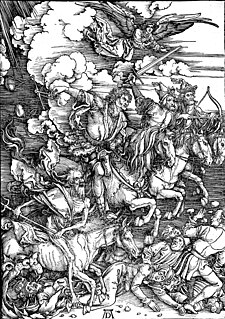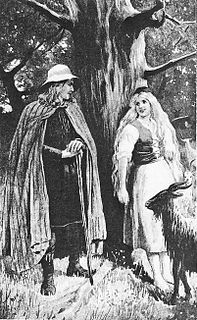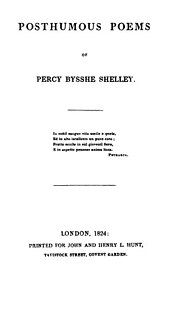 W
WThe brahmin Sissa ibn Dahir is a mythical character from India, known for the invention of Chaturanga, the Indian predecessor of chess, and the Wheat and Chessboard Problem he would have presented to the king when he was asked what reward he'd like for that invention.
 W
WThe 2012 phenomenon was a range of eschatological beliefs that cataclysmic or transformative events would occur on or around 21 December 2012. This date was regarded as the end-date of a 5,126-year-long cycle in the Mesoamerican Long Count calendar, and festivities took place on 21 December 2012 to commemorate the event in the countries that were part of the Maya civilization, with main events at Chichén Itzá in Mexico and Tikal in Guatemala.
 W
WAn apocalypse is a disclosure or revelation of great knowledge. In religious concepts an apocalypse usually discloses something very important that was hidden or provides what Bart Ehrman has termed, "A vision of heavenly secrets that can make sense of earthly realities". Historically, the term has a heavy religious connotation as commonly seen in the prophetic revelations of eschatology obtained through dreams or spiritual visions. It is believed by many Christians that the biblical Book of Revelation depicts as an "apocalypse", the complete destruction of the world, preceding the establishment of a new world and heaven. However, there is also another interpretation of the Book of Revelation in which the events predicted are said to refer to the destruction of Jerusalem in A.D. 70 by the Roman armies of Titus. This second view is known as the Preterist view of eschatology.
The Cypress of Kashmar was sacred to followers of Zoroastrianism. According to the Iranian epic Shahnameh, the tree had grown from a branch Zoroaster had carried away from Paradise and which he planted in honor of King Vishtaspa's conversion to Zoroastrianism in Kashmar. In 861 AD, Abbasid Caliph al-Mutawakkil ordered the tree be felled and transported to his capital in Samarra where its wood would be used as beams for his new palace. The palace and its spiral minaret still stand today.
 W
WIn Hindu mythology, the Dānavas were a race descending from Dakṣa.
 W
WA Divine Council is an assembly of deities over which a higher-level god presides.
 W
WEputhou Thangjing is the ancient national deity of erstwhile ancient kingdom of Moirang. According to common legend, he is the creator and the ancestor of the people of Moilang dynasty. He is one of the ten directional gods in Manipuri mythology and Sanamahism.
 W
WEschatology is a part of theology concerned with the final events of history, or the ultimate destiny of humanity. This concept is commonly referred to as "the end of the world" or "end times".
 W
WForgiveness, in a psychological sense, is the intentional and voluntary process by which one who may initially feel victimized, undergoes a change in feelings and attitude regarding a given offense, and overcomes negative emotions such as resentment and vengeance. Theorists differ, however, in the extent to which they believe forgiveness also implies replacing the negative emotions with positive attitudes. In certain legal contexts, forgiveness is a term for absolving or giving up all claims on account of debt, loan, obligation, or other claims.
 W
WIncest is found in folklore and mythology in many countries and cultures in the world.
 W
WInsects have appeared in mythology around the world from ancient times. Among the insect groups featuring in myths are the bee, fly, butterfly, cicada, dragonfly, praying mantis and scarab beetle.
 W
WThe Legend of the Four Blood Bars is a legend about the origins of the Senyera Reial that appeared for the first time in 1551 at Segunda parte de la crónica general de España, a chronicle edited by Pere Antoni Beuter in Spanish in Valencia. This legend places the Senyera Reial origins on Wilfred the Hairy. Specifically, it narrates that the sign of the four bars was created after a battle against the Normans, when the King of the Franks doused his hands in the blood of Wilfred the Hairy's injuries. After swiping his fingers over the golden shield of the Earl of Barcelona he said: "These will be your arms, Earl".
 W
WIn Meitei religion and Meitei mythology, the Guardians of the Directions or Maikei Ngaakpa Lai refers to the deities who rule the specific directions of space according to Sanamahism.
 W
WNebris is a fawn skin, similar to an aegis, originally worn as a hunter's clothing item and later attributed to Dionysus.
 W
WNongshaba or Kanglasha is a lion-like Dragon God in Sanamahism as well as Manipuri mythology. He is worshipped by the people of both the Ningthouja dynasty as well as the Moilang dynasty. He is worshipped as the greatest of the Umang Lais in Kangleipak since time immemorial. A pair of two huge structure of the dragons are still standing inside the Kangla Palace of Manipur.
 W
WPakhangba is a primordial serpentine dragon god in Meitei mythology and religion. He is present in the heraldry of Manipur kingdom, originated from "Paphal" (ꯄꯥꯐꯜ), the mythical illustrations of the deity belonging to the traditional beliefs, preceding Hinduism in Manipur. Among the Meiteis, it is believed that the ancestor of one of the clans manifested himself as the Pakhangba.
 W
WPetrifaction, or petrification, defined as turning people to stone, is a common theme in folklore and mythology, as well as in some works of modern literature.
 W
WResurrection or anastasis is the concept of coming back to life after death. In a number of religions, a dying-and-rising god is a deity which dies and resurrects. Reincarnation is a similar process hypothesized by other religions, which involves the same person or deity coming back to live in a different body, rather than the same one.
 W
WSardus or also Sardus Pater was the eponymous mythological hero of the Nuragic Sardinians. Sardus appears in the writings of various classical authors, like Sallust and Pausanias.
 W
WThe Witch of Atlas is a major poetic work of the English romantic poet Percy Bysshe Shelley written in 1820 and published posthumously in 1824 in the Posthumous Poems collection. The poem was written in 78 ottava rima stanzas during the period when Prometheus Unbound and The Cloud were written and reflects similar themes. The theme of the poem is a quest for the perfect union.
 W
WZlydzens are hazardous creatures in Belarusian mythology. These mythological characters often live under the masonry stove.